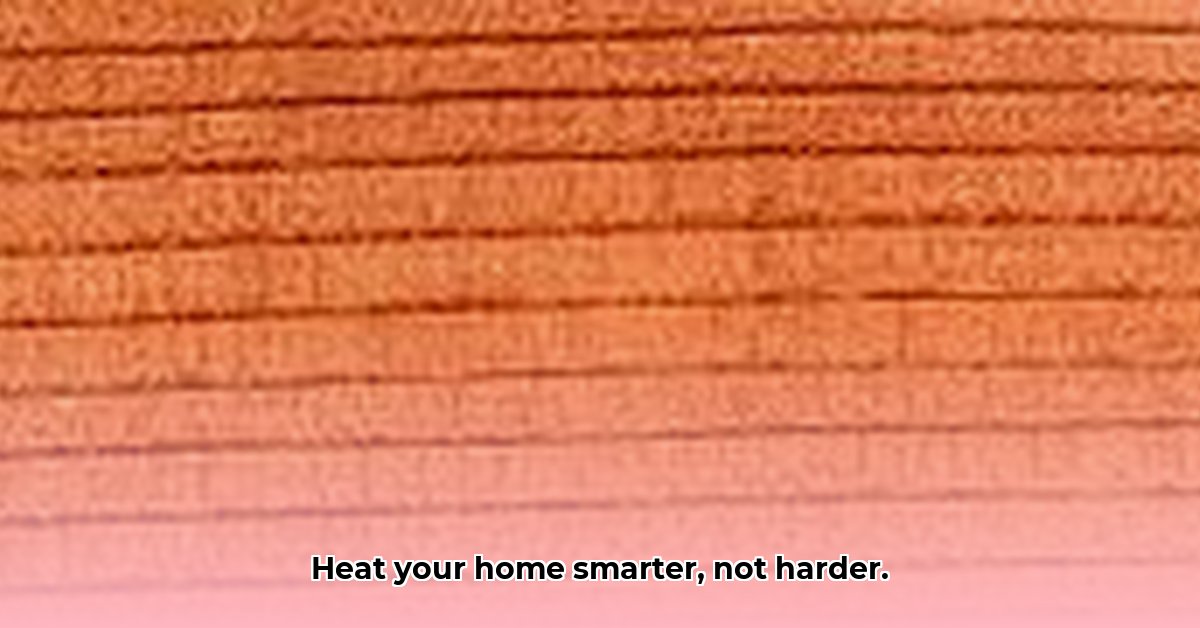Freezing this winter? Wish your wood stove heated your whole house better? A wood stove fan can make a huge difference! This article compares the best wood stove fans on the market, so you can find the perfect one for your home. We’ll explore efficiency, safety, and cost. We’ll even show you how to install a fan and maximize its heat output. Whether you’re a seasoned wood stove user or a complete beginner, this guide will help you choose the right fan and stay toasty warm all winter long.
Understanding Wood Stove Fans
Choosing the right wood stove fan can significantly improve your home’s warmth and comfort. With a wide variety of options available, selecting the perfect one can seem daunting. Let’s simplify the process and help you find the ideal fan for your needs.
How Wood Stove Fans Work
A wood stove fan is a device designed to sit on top of your wood-burning stove. It harnesses the stove’s heat to generate its own power, eliminating the need for electricity. This fan efficiently draws warm air from the stove and circulates it throughout the room, distributing heat evenly. It’s a simple yet effective way to enhance your wood stove’s heating efficiency. Proper air circulation can boost heating efficiency by as much as 20 percent, ensuring that warmth reaches every corner of your living space.
Factors to Consider When Selecting a Wood Stove Fan
Several essential features differentiate wood stove fans. Understanding these aspects will guide you in selecting the fan that best suits your requirements.
- Airflow Capacity (CFM): Measured in Cubic Feet per Minute (CFM), this indicates the volume of air the fan can move. Higher CFM values signify better and quicker heat distribution, particularly beneficial for larger rooms or open-concept spaces.
- Optimal Temperature Range: Each fan operates most effectively within a specific temperature range. Ensure that the fan’s operating range aligns with your wood stove’s heat output to prevent performance issues.
- Blade Design and Size: Larger blades generally circulate more air, even if the fan has fewer blades. Some fans emphasize quiet operation over maximum airflow, so prioritize your needs accordingly.
- Safety Features: An automatic shut-off feature is crucial for safety. It safeguards the fan’s motor from overheating, reducing the risk of damage and fire hazards.
- Durable Construction: Opt for fans constructed from high-quality, durable materials like anodized aluminum. Such materials enhance the fan’s resilience and prolong its lifespan.
- Noise Level: Consider the decibel level of the fan if quiet operation is a priority, especially in living areas.
Recommended Wood Stove Fan Models
Below is a comparison of some highly-rated wood stove fans available on the market:
| Wood Stove Fan Model | Approximate CFM | Operating Temperature (°F) | Blade Design | Safety Features | Material | Noise Level (dB) |
|---|---|---|---|---|---|---|
| Flanagan Twin Engine | 180-200 | 185-662 | 5 blades | Overheat protection | Aluminum | <25 |
| Voda Stove Fan | 150-170 | 185-660 | 4 blades | Overheat protection | Anodized Aluminum | <25 |
| Tomersun Stove Fan | 150-170 | 176-653 | 4 blades | Overheat protection | Anodized Aluminum | <25 |
| Ecofan AirMax | 175 | 200-650 | 2 blades | None | Aluminum | <30 |
| Galafire Stove Fan | 160-180 | 122-653 | 4 blades | None | Anodized Aluminum | <25 |
| Hanaoyo Stove Fan | 150-170 | 131-653 | 6 blades | Overheat protection | Anodized Aluminum | <25 |
| Tsendi Stove Fan | 160-180 | 122-662 | 4 blades | None | Anodized Aluminum | <25 |
(Note: CFM values are approximate and can vary. Always verify the manufacturer’s specifications.)
Optimizing Your Wood Stove Fan’s Performance
Proper placement is crucial for optimal performance. Ensure sufficient clearance around the fan and position it directly on the stovetop. Also, make sure that the surface that the fan will be sitting on is level for optimal balance.
Setting Up Your Wood Stove Fan:
- Clean the Stovetop: Ensure the stovetop is clean and free of debris.
- Warm Up the Stove: Allow the stove to reach its operating temperature before placing the fan.
- Position the Fan: Gently place the fan squarely on the stovetop, near the back or side, away from the flue.
Common Issues and Solutions
While generally safe, it’s important to be aware of potential issues when using a wood stove fan.
| Risk Category | Severity | Likelihood | Mitigation |
|---|---|---|---|
| Overheating | High | Low | Ensure proper ventilation and use a fan with an automatic shut-off feature. |
| Motor Failure | Medium | Medium | Purchase a fan from a reputable brand with a warranty. Regular cleaning can also extend the lifespan. |
| Poor Airflow | Low | Medium | Select a fan with the appropriate CFM for your room size and ensure proper placement on the stove. |
| Burns from Hot Surfaces | High | Low | Keep children and pets away from the stove and fan. Use stove gloves when handling the fan. |
By understanding these potential risks and implementing the suggested precautions, you can safely and effectively enjoy the benefits of a wood stove fan.
Choosing the Best Wood Stove Fan for Larger Rooms
Key Considerations:
- Higher CFM ratings are essential for larger rooms to ensure adequate air circulation.
- Minimize noise levels for a comfortable environment; opt for quieter models.
- Verify the fan’s temperature tolerance to guarantee compatibility with your stove.
- Prioritize safety features, such as automatic shut-off, for peace of mind.
- Examine the fan’s build quality and materials for long-term durability.
Assessing Your Needs: Room Size and Heat Distribution
When selecting a wood stove fan for large rooms, the primary factor is airflow, measured in CFM (cubic feet per minute). A larger room demands a fan with a significantly higher CFM rating compared to smaller spaces. For every 100 square feet, you generally need a fan that provides at least 100 CFM. The higher the CFM, the better the warm air distribution will be.
Essential Features to Look For
In addition to CFM, consider the following crucial performance features:
- Low Noise Level: A quiet fan is essential, particularly for large rooms where it will operate for extended durations. Seek models with “silent” or low-decibel operation, ideally specifying decibel (dB) levels for accurate comparisons.
- Optimal Temperature Range: Ensure the fan’s operating temperature range aligns with your stove’s typical operating temperature. Exceeding this range can damage the motor. An automatic safety shut-off mechanism provides an extra layer of protection.
- Robust Construction and Materials: Opt for a sturdy, well-built fan made from durable materials like anodized aluminum. Examine the blades, motor housing, and base for overall sturdiness.
Additional Tips for optimal usage
- Consider a dual-fan setup: If you’re trying to heat a very large space, two fans might be more effective than one. Place them on opposite sides of the stove for maximum circulation.
- Monitor stove temperature: Use a stove thermometer to ensure your stove is operating within the fan’s recommended temperature range.
- Regular cleaning: Dust and debris can reduce the fan’s efficiency. Clean the blades regularly with a soft cloth.
Safety First: A Critical Factor
Safety should always be a top priority. Ensure a safe distance between the fan and flammable materials. Closely supervise children and pets around the stove and fan, and never leave them unattended when the stove is in use. An automatic shut-off feature is highly desirable, but regular inspection remains essential.
Making an Informed Decision
Selecting the best wood stove fan involves careful assessment of multiple factors. Prioritize CFM based on your room size without compromising on noise levels or safety features. Choose fans with high-quality construction and materials. Thorough research and comparison shopping will help you find a fan that efficiently distributes heat and adds value to your home heating system.
- Apps Button on Android Not Working? Fix it Now - November 28, 2025
- Make The Apps Button Work For You On Your Phone - November 27, 2025
- Essential Productivity Apps for Android to Work Smarter - November 26, 2025










